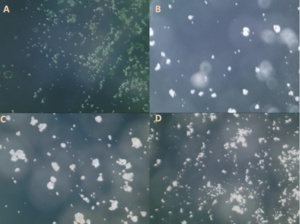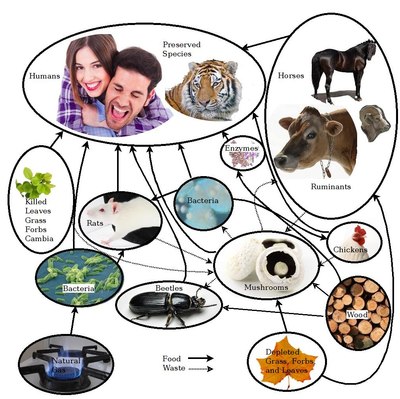
Reducing meat consumption reduces carbon emissions and other environmental harms. Unfortunately, commercial plant-based meat substitutes have not seen widespread adoption. In order to enable more flexible processing methods, this paper analyzes the characteristics of commercially available spirulina, soy, pea, and brown rice protein isolates to provide data for nonmeat protein processing that can lead to cost reductions. The thermal and rheological properties, as well as viscosity, density, and particle size distribution, were analyzed for further study into alternative protein-based food processing. The differential scanning calorimetry analysis produced dry amorphous-shaped curves and paste curves with a more distinct endothermic peak. The extracted linear temperature ranges for processing within food production were 70–90 °C for spirulina, 87–116 °C for soy protein, 67–77 °C for pea protein, and 87–97 °C for brown rice protein. The viscosity analysis determined that each protein material was shear-thinning and that viscosity increased with decreased water concentration, with rice being an exception to the latter trend. The obtained viscosity range for spirulina was 15,100–78,000 cP, 3200–80,000 cP for soy protein, 1400–32,700 cP for pea protein, and 600–3500 cP for brown rice protein. The results indicate that extrusion is a viable method for the further processing of protein isolates, as this technique has a large temperature operating range and variable screw speed. The data provided here can be used to make single or multi-component protein substitutes.
See also[edit | edit source]

- Feeding Everyone No Matter What - The full book main page
- David Denkenberger and Joshua Pearce, Feeding Everyone No Matter What: Managing Food Security After Global Catastrophe , 1st Edition, Academic Press, 2015
- Free Preview: Google books
- Cover on Academia
- Facebook page
- Alternative Foods as a Solution to Global Food Supply Catastrophes
- Resilience to global food supply catastrophes
- Feeding Everyone if the Sun is Obscured and Industry is Disabled
- Cost-Effectiveness of Interventions for Alternate Food to Address Agricultural Catastrophes Globally
- Feeding Everyone: Solving the Food Crisis in Event of Global Catastrophes that Kill Crops or Obscure the Sun
- Food without sun: Price and life-saving potential
- Cost-effectiveness of interventions for alternate food in the United States to address agricultural catastrophes
- Micronutrient Availability in Alternative Foods During Agricultural Catastrophes
- Preliminary Automated Determination of Edibility of Alternative Foods: Non-Targeted Screening for Toxins in Red Maple Leaf Concentrate
- Open Source Software Toolchain for Automated Non-Targeted Screening for Toxins in Alternative Foods
- Scaling of greenhouse crop production in low sunlight scenarios
- Potential of microbial protein from hydrogen for preventing mass starvation in catastrophic scenarios
- U.S. Potential of Sustainable Backyard Distributed Animal and Plant Protein Production During & After Pandemics
- Global distribution of forest classes and leaf biomass for use as alternative foods to minimize malnutrition
- Long-term cost-effectiveness of interventions for loss of electricity/industry compared to artificial general intelligence safety
- Long term cost-effectiveness of resilient foods for global catastrophes compared to artificial general intelligence safety
- Rapid repurposing of pulp and paper mills, biorefineries, and breweries for lignocellulosic sugar production in global food catastrophes
- Nutrition in Abrupt Sunlight Reduction Scenarios: Envisioning Feasible Balanced Diets on Resilient Foods
- Methane Single Cell Protein: securing protein supply during global food catastrophes
- Killing two birds with one stone: chemical and biological upcycling of polyethylene terephthalate plastics into food
- How Easy is it to Feed Everyone? Economic Alternatives to Eliminate Human Nutrition Deficits
- Quantifying Alternative Food Potential of Agricultural Residue in Rural Communities of Sub-Saharan Africa
- Yield and Toxin Analysis of Leaf Protein Concentrate from Common North American Coniferous Trees
- Toxic Analysis of Leaf Protein Concentrate Regarding Common Agricultural Residues
- Towards Sustainable Protein Sources: The Thermal and Rheological Properties of Alternative Proteins
Additional Information[edit source]
- ALLFED
- Dave Denkenberger Publications
- OSE Wiki "Synfood" (i.e. protein and other dietary components from microbial organisms fed on gas or other hydrocarbons)





